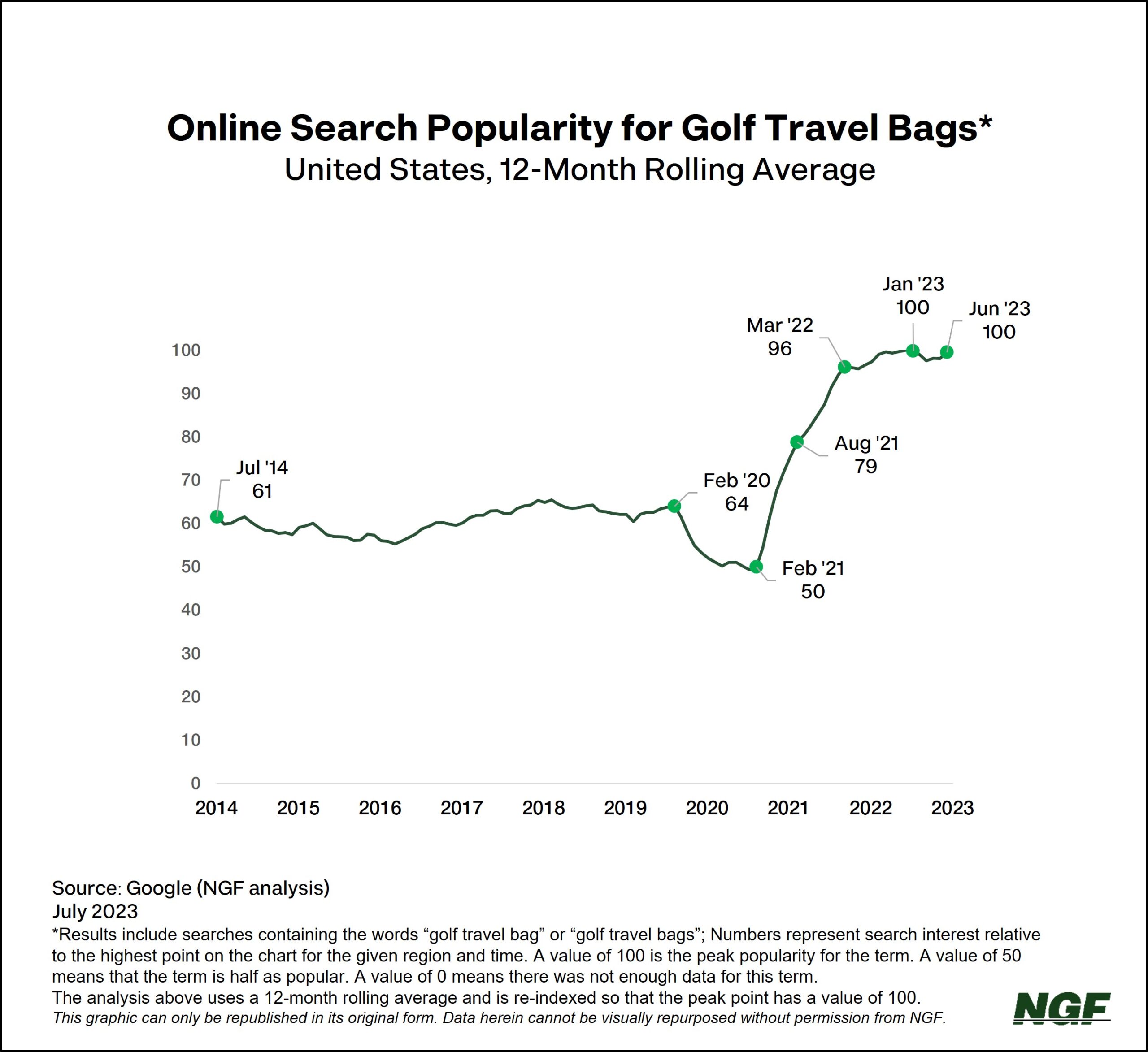Golf’s Ultimate Discretionary Expense?
(
If we want to talk about the sturdiness of golf demand – “traditional” golf, at least – no metric is more direct or appropriate than rounds played (which was up 10% in May, by the way).
And yet there are other ways to assess the current depth of consumer interest and investment in the game.
Golf equipment buying is probably the next obvious measure. Economically we’d view this kind of spending – even more than a round of golf – as “non-essential,” as it’s something you want but can live without. It’s discretionary spending like this that most reveals what makes people happy.
Thus, we also monitor golf-related travel, perhaps the ultimate discretionary expense and expression of demand for the game. It requires planning, commitment, tradeoffs and, for some, intense negotiating with loved ones. In other words, you’ve got to LOVE golf to make this investment.
It’s encouraging to see, then, that golf travel continues to trend positively. This week we heard from 40 golf resort and destination properties across the U.S., who told us advanced bookings are up 5-7% over 2022. Around this time last year, the same audience reported that advanced bookings were outpacing 2021 by roughly 12%.
Other data we track tells a similar story:
- More than 70% of Core golfers tell us they have – and/or expect they will – take some kind of golf trip before the end of the year. We know this to be ambitious, but anything north of 50% would represent a higher proportion of travelers than pre-pandemic.
- Online search popularity for golf travel bags is maintaining at a level 30% ahead of pre-pandemic (see graphic below).

Golf tourism is not just an important indicator for overall golf demand, it’s a critical component of the U.S. golf economy – the second largest sector, in fact, generating more than $31 billion in spending in 2022. This accounting includes only those expenditures that took place away from the golf course (travel, lodging, meals, incidentals, etc.) during a trip in which a person traveled 50-plus miles and played golf as a key recreational activity for business, leisure, or “bleisure.”
Golfers dished out another $9 billion in green, cart and range fees, merchandise and F&B on those trips, which pushes the impact of golf travel in the U.S. to $40 billion, or roughly 40% of the industry’s direct economic contributions.
Oh, the places golfers go!
Short Game.
"*" indicates required fields
How can we help?
NGF Membership Concierge

"Moe"
Learn From NGF Members
 Ship Sticks Secrets to a Hassle-Free Buddies Golf Trip
Ship Sticks Secrets to a Hassle-Free Buddies Golf Trip
Whether you’re the head planner of your upcoming buddies golf trip or simply along for the ride, we’ve gathered a few easy ways to keep everyone in your group happy.
Read More... Golf Course Turf, Soil and Water Quality Diagnostic Testing
Golf Course Turf, Soil and Water Quality Diagnostic Testing
As humans, we see our primary care physician on a regular basis to proactively evaluate our vital signs. Likewise, a superintendent should perform frequent diagnostic testing on their golf course.
Read More... Unlocking Distance: Launch Conditions and Angle of Attack
Unlocking Distance: Launch Conditions and Angle of Attack
We’ve long known that higher launch and lower spin is a powerful combination for generating consistently long and straight tee shots. A key factor in optimizing launch conditions, one often overlooked, is ...
Read More...





